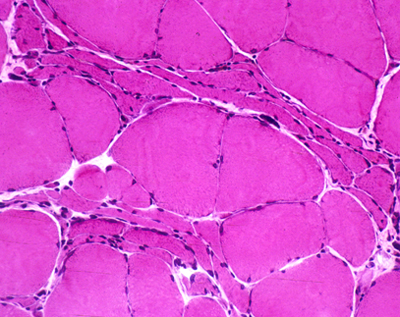The Wall Street Journal reports today that the muscle gains from anabolic steroid use may be permanent according to an unnamed and unpublished research study from UmeÃ¥ University in Sweden (“Cheaters Do Prosper: Scientists in Sweden Make a Stunning Claim: The Benefits of Steroids May Never Go Away — Even When Athletes Quit Taking Them,” April 4).
When the researchers looked at the subjects’ muscles through a microscope, they made a surprising discovery: Rather than returning to their original proportions, the muscles of the steroid users who’d stopped taking the drug looked remarkably similar to those of the subjects who were still using. They also had larger muscle fibers and more growth-inducing “myonuclei” in their muscle cells than the nonsteroid users.
MESO-Rx has identified the research as belonging to Anders Ericsson in the Department of Integrative Medical Biology at Sweden’s Umea University. Ericsson’s doctoral thesis was entitled “Strength training and anabolic steroids: a comparative study of the trapezius, a shoulder muscle and the vastus lateralis, a thigh muscle, of strength trained athletes” and was submitted on October 6, 2006. The full text PDF is available online.
The main findings were that: a) Muscle fiber hypertrophy by strength training is further increased by anabolic steroids. b) The number of nuclei per muscle fiber is higher in power lifters using anabolic steroids compared to non-steroids using lifters. c) Among power lifters who have withdrawn from anabolic steroid usage and training for several years, the number of myonuclei, both subsarcolemmal and internal, remains high. d) In active power lifters, anabolic steroids have no further effect on the number of satellite cells per fiber. e) Power lifters have a high proportion of split fibers.
High intensity resistance training increases muscle strength and banned substances such as testosterone and anabolic steroids can enhance the training effects. The studies on muscle cell morphology presented in this thesis reveals that anabolic steroids and testosterone increases muscle fiber size and adds more nuclei to the muscle cell.
Based on the morphological appearance of muscle sections from doped and nondoped power lifters, we conclude that testosterone and anabolic steroids enhances the hypertrophic effects of training without adding new features. The addition of myonuclei by training and doping appears to be longer lasting in some muscles than in others. The high proportion of split fibers in power lifter is probably due to high mechanical stress. The findings and conclusions in this thesis raise questions regarding relevant suspension times for athletes caught with banned substances in the body.
The thesis confirms what many bodybuilders have long suspected based on anecdotal evidence. Even noted steroid researcher Charles Yesalis is convinced of the permanent muscle-enhancing effects of anabolic steroids based on his assessment of 30 years of anecdotal evidence.
Charles Yesalis, a former strength coach and professor emeritus of health policy and administration at Pennsylvania State University, says athletes who continue to train can retain as much as 85% of their gains from using drugs. This isn’t based on muscle biopsies or peer-reviewed research, he says, but on 30 years of experience with athletes. He says he has talked privately with hundreds of dopers, some of them champions, and has seen the permanent benefits of performance-enhancing drugs. “These things are like rocket fuel,” he says.
The little known doctoral thesis has already influenced doping penalties even though it was not peer-reviewed and not published in any medical or scientific journal.
At a meeting in Madrid in November, WADA’s Foundation Board voted to change its code to allow for a maximum four-year ban for first-time offenders caught using performance-enhancing drugs. The new ban, which goes into effect in all sanctioned Olympic events in 2009, is a severe penalty for athletes — whose careers tend to be short. Bengt Eriksson, the vice-chairman of the Swedish Sport Confederation’s doping commission, who attended the Madrid conference, says he thinks the study was “one of the main reasons” WADA raised the maximum penalty. David Howman, WADA’s director general, says the Swedish study played only a minor role in the decision.
Scientific support for the notion that three or four cycles of anabolic steroids could lead to permanent muscle enhancement is big news in bodybuilding circles.
But if true, this could lead to lifetime bans for first time doping offenses by WADA and other anti-doping agencies. This is also big news in the doping world too.
WADA’s [director general] Mr. Howman says that if science continues to confirm the findings of the Swedish study, a lifetime ban is not out of the question. “Never say never,” he says.
About the author
Millard writes about anabolic steroids and performance enhancing drugs and their use and impact in sport and society. He discusses the medical and non-medical uses of anabolic-androgenic steroids while advocating a harm reduction approach to steroid education.


Leave a Reply
You must be logged in to post a comment.